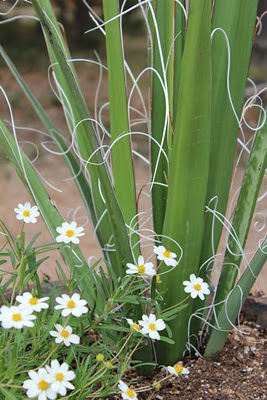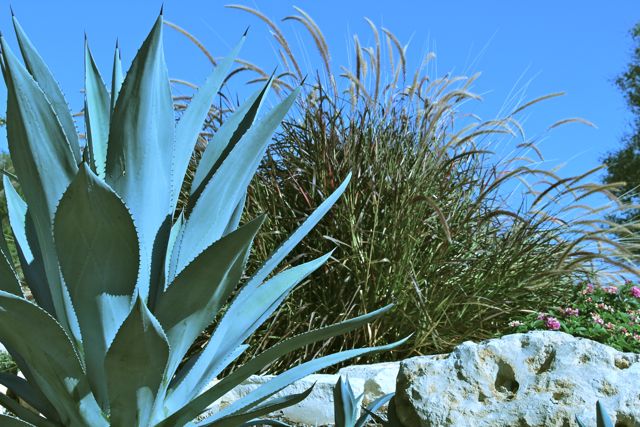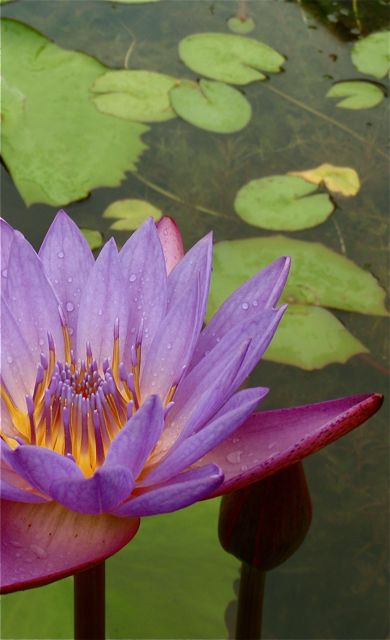Hairy scary plants in the garden
 Purusing the beautiful plant stock at Vivero Growers Nursery two weeks ago, I was struck by this yucca covered in what look like curling hairs.
Purusing the beautiful plant stock at Vivero Growers Nursery two weeks ago, I was struck by this yucca covered in what look like curling hairs.
They’re not, of course, but they are common to yuccas.
One of the main differences between yuccas and agaves is these white fibers. About half of all yucca species have these threadlike hairs.
Sadly, I tossed the pot it came out of before writing down which variety this is — perhaps my friends at Vivero will help me with a reminder?!
In any case, I loved the idea of this stark, spiny, rugged-looking yucca paired with the delicate, flowing clump of black foot daisies.
This is the kind of contrast I find so beautiful in the drought-tolerant native and adapted plants that are home to Central Texas. Do you have some pairings like this in your garden?









